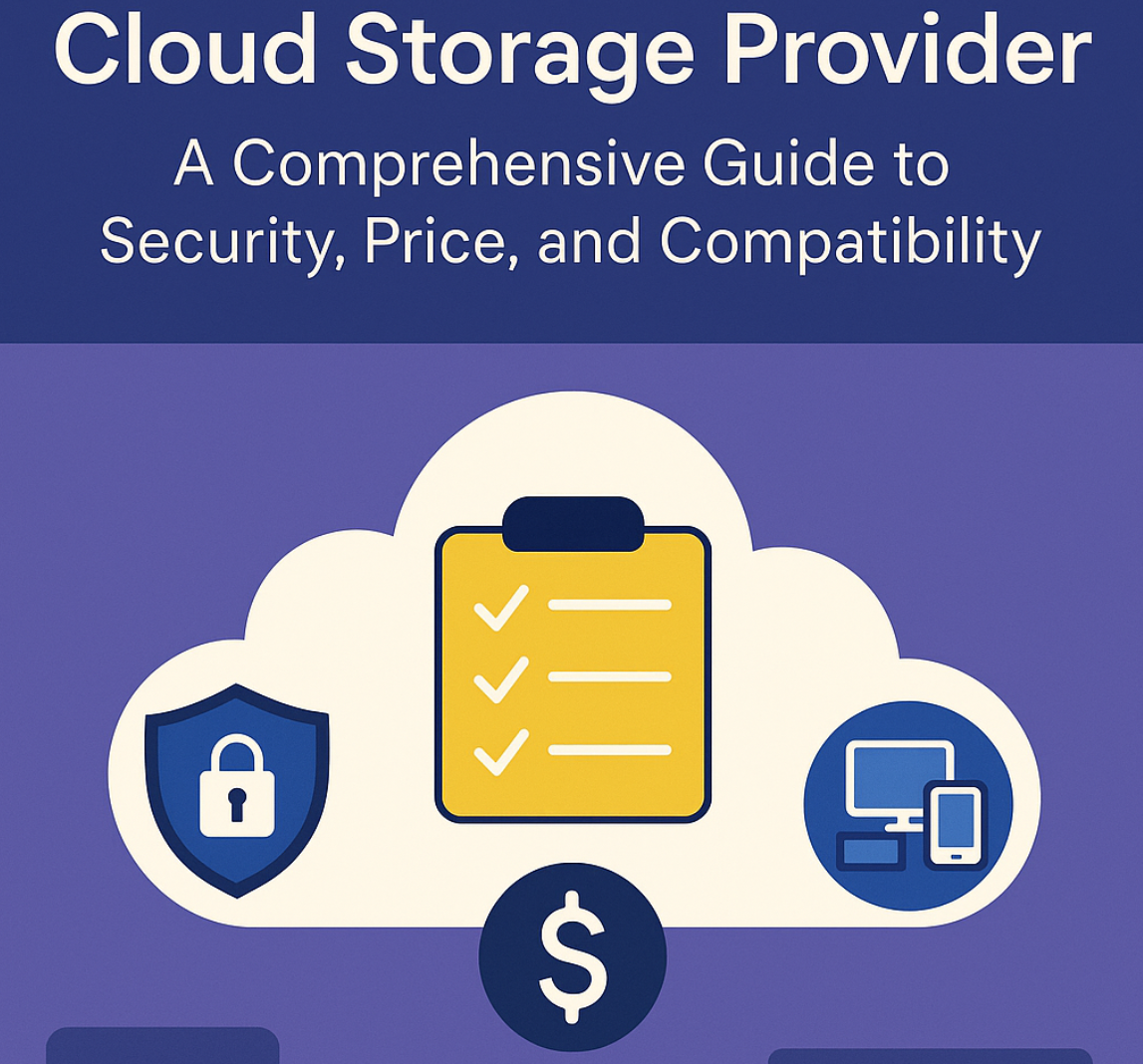Choosing the Right Cloud Storage Provider: A Comprehensive Guide to Security, Price, and Compatibility
Introduction
In today’s digital age, cloud storage has become an indispensable tool for individuals and businesses alike. It offers a convenient way to store, access, and share files from anywhere in the world. However, with a multitude of providers on the market, choosing the right one can be a daunting task. This guide will help you navigate the landscape by focusing on the three most critical factors: security, price, and device compatibility.
Security: Protecting Your Data is Priority #1
When entrusting your files to a third-party service, security should be your absolute top concern. A reputable cloud storage provider will employ a multi-layered approach to protect your data from unauthorized access, breaches, and other threats.
a) Encryption Standards: The Bedrock of Security
In-Transit and At-Rest Encryption: Look for providers using AES-256-bit encryption for both data transfer and storage.
Zero-Knowledge Encryption: Providers like Sync.com and Tresorit ensure only you hold the decryption keys, maximizing privacy.
Case Study: A small law firm chose Tresorit for its zero-knowledge encryption, ensuring confidential legal documents remained fully secure and compliant with privacy laws.
b) Two-Factor Authentication (2FA)
Adding 2FA ensures even compromised passwords can’t grant access without secondary verification.
c) Data Center Certifications and Compliance
Look for ISO 27001, SOC 2 Type II, and GDPR-compliant providers for guaranteed high security standards.
✅ Top Picks for Security:
- Sync.com – End-to-end and zero-knowledge encryption.
- Tresorit – Enterprise-level security for sensitive data.
- pCloud – Optional client-side encryption add-on.
Key Takeaways:
- Prioritize AES-256-bit and zero-knowledge encryption.
- Enable Two-Factor Authentication for added protection.
- Check provider certifications and compliance standards.
Price: Finding the Best Value for Your Budget
While cost shouldn’t be the only factor, it’s an important one. The goal is to find a provider that balances affordability with essential features.
a) Free Storage Plans
Providers like Google Drive, iCloud, and OneDrive offer 5–15GB free storage for testing features before committing.
b) Monthly vs. Annual Plans
Annual plans usually offer 15–30% savings over monthly payments.
c) Lifetime Deals
pCloud’s one-time payment model eliminates recurring fees, making it a long-term cost-saving option.
d) Business vs. Personal Plans
Business plans provide admin controls, collaboration tools, and shared storage pools—ideal for teams.
Comparison Table: Price & Features
| Provider | Free Plan | 1TB Annual Cost | Lifetime Deal | Key Features |
|---|---|---|---|---|
| IDrive | 10 GB | ~$70/year | N/A | Strong backup, multi-device support |
| Google Drive | 15 GB | ~$99/year | N/A | Seamless Google ecosystem integration |
| pCloud | 10 GB | ~$99/year | Available | Client-side encryption, fast uploads |
| Sync.com | 5 GB | ~$96/year | N/A | Zero-knowledge encryption, privacy focus |
Key Takeaways:
- Test free plans first before upgrading.
- Annual plans offer better value for long-term use.
- Lifetime deals provide ultimate cost savings for dedicated users.
Device Compatibility: Access Anywhere, Anytime
A good provider ensures seamless access across all devices, platforms, and apps you use daily.
a) Multi-Platform Support
Look for native apps for Windows, macOS, Linux, Android, and iOS for universal accessibility.
b) File Sync Speed
Dropbox is known for fast real-time sync, ensuring your latest file versions are always available.
c) Offline Access
Ability to download files for offline use is essential for working without internet access.
d) Integration with Other Applications
Google Drive integrates well with Google Workspace, while OneDrive works seamlessly with Microsoft Office 365.
Case Study: A freelance designer relies on Dropbox to sync large design files between a desktop and laptop, allowing uninterrupted workflow regardless of location.
Top Cross-Platform Providers:
- Dropbox – Leading sync speed and simplicity.
- Google Drive – Ideal for Android and Google service users.
- pCloud – Consistent experience with unlimited file size uploads.
Key Takeaways:
- Choose providers with apps for all your devices.
- Fast sync speeds are crucial for productivity.
- Offline access is a must-have feature.
Final Thoughts
The best cloud storage provider depends on your unique needs. Prioritize security with providers like Sync.com or Tresorit, save costs with pCloud’s lifetime plan, or enjoy seamless integration with Google Drive or OneDrive. By carefully weighing security, pricing, and compatibility, you can confidently select the perfect solution for your storage needs.

